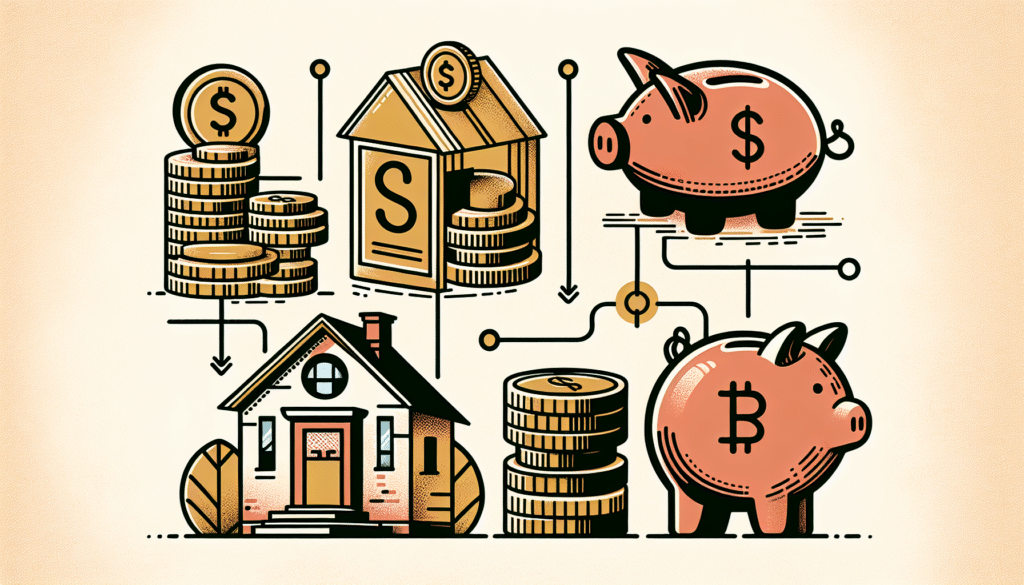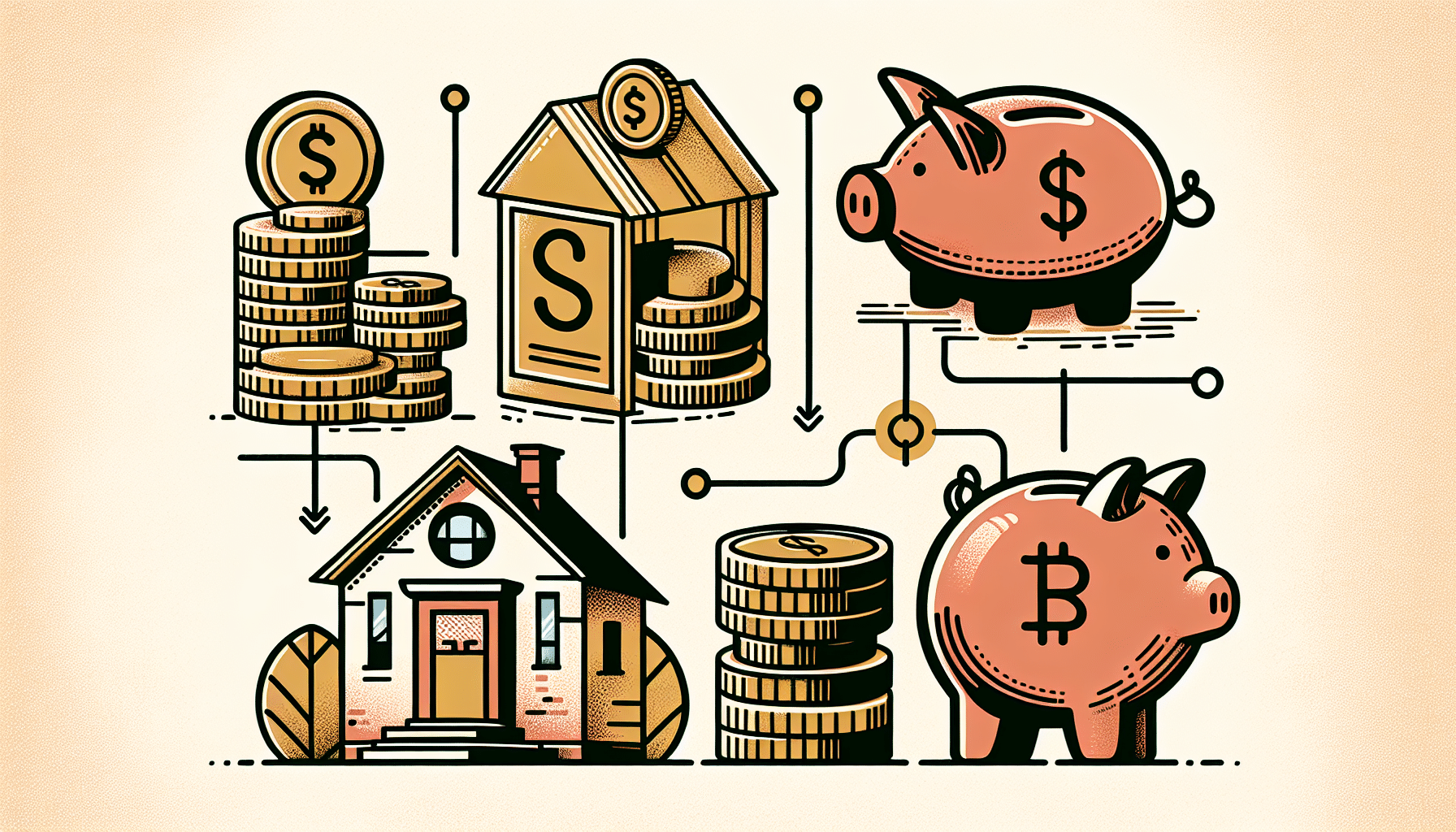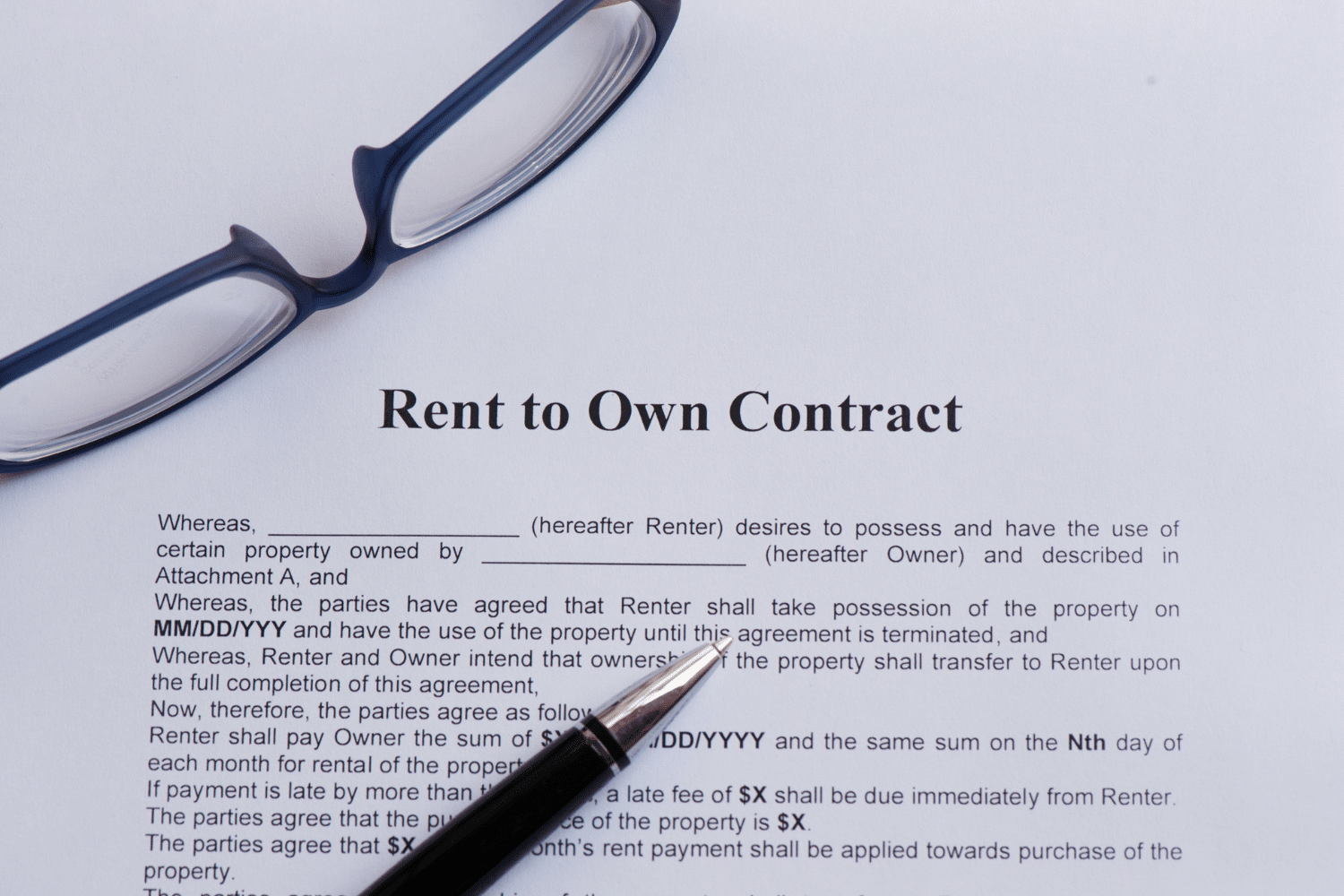Navigating rent to own homes for low income families can be your gateway to homeownership. In this no-fluff guide, we delve into the specifics of rent-to-own processes, offering actionable steps and critical information to help you make well-informed decisions. From understanding the pros and cons to safeguarding against scams, this article prepares you to embark on the journey to owning your home, even on a limited budget.
Key Takeaways
- Rent-to-own homes provide a structured pathway to homeownership, allowing tenants to live in a desired property while building equity and improving their credit scores.
- It’s important to understand rent-to-own agreements thoroughly, including terms like lease-option versus lease-purchase, responsibility for maintenance, and how payments contribute to the purchase price.
- Programs like Home Partners of America, Divvy Homes, and Dream America offer tailored rent-to-own opportunities for low-income families, with safeguards against scams and emphasis on financial planning for successful homeownership.
Understanding Rent-to-Own Homes

Take a moment to imagine a housing arrangement that offers the flexibility of renting, with a clear road map to owning your own home. This is the essence of a rent-to-own home agreement. These agreements allow you to live in your chosen house while simultaneously working towards purchasing it. It’s essentially a lease purchase agreement, where the tenant pays a structured monthly fee with the goal of eventually obtaining a mortgage.
For families with limited savings or lower credit scores, this could be a game-changer. Rent-to-own can be a beacon of hope in the otherwise daunting housing markets, allowing individuals to build equity towards homeownership while improving their credit score. However, as promising as it sounds, it’s essential to choose a responsible rent-to-own program and approach it with careful planning to avoid falling into predatory practices.
How Rent-to-Own Works
Rent-to-own agreements are unique, combining the mechanics of a standard lease agreement with an option to purchase the property. This setup allows you to:
- Live in the house while working towards becoming a homeowner
- Pay an upfront option fee
- Make rent payments that are slightly higher than the typical market rate
- Have the extra rent contribute towards the home purchase price, gradually building up your down payment.
It’s important to remember that in a rent-to-own situation, the tenant usually bears the responsibility for property maintenance and repairs during the lease period. The rent-to-own contract should clearly stipulate how you can exercise the option to buy the property, ensuring you understand the terms under which you can transition from a tenant to a homeowner.
Benefits for Low-Income Families
Rent-to-own agreements provide a unique opportunity for low-income families. By living in the house you aspire to own, you can start building equity over time, even with limited savings. This arrangement also offers the stability of residing in a desired home and the opportunity to financially prepare for its eventual purchase.
Further, these agreements provide valuable time to improve credit and save for a down payment. This facilitates a smoother transition to homeownership. Essentially, it’s like attending a home buyer education course while living in your dream home.
Evaluating Rent-to-Own Programs

Just like shopping for a home, it’s essential to shop around for rent-to-own programs. Factors to consider include the program requirements, lease terms, and purchase options. It’s also critical to understand how your monthly rent payments are being allocated. In many rent-to-own agreements, the rent paid might include a portion that contributes towards the purchase price of the property.
Choosing the right rent-to-own program is just as crucial as choosing the right home. After all, it’s not just about finding a house to live in; it’s about finding a pathway to homeownership.
Program Requirements
Before diving headfirst into a rent-to-own agreement, it’s essential to understand the program requirements. These requirements often include a minimum credit score and a stable income. For example, Divvy Homes requires a minimum FICO score of 550, while Dream America requires at least 500. The income criterion is also important, with some programs requiring an annual household income over a certain threshold.
It’s also essential to show evidence of stable income and savings. For instance, the Dream America program requires participants to demonstrate a minimum of $8,000 in savings, 401(k), or a gift, and typically need to provide evidence of 12 months of on-time rent payments. Understanding these requirements can help you determine if you qualify for the program and avoid any surprises down the line.
Lease Terms and Purchase Options
Rent-to-own contracts can be classified as lease-option or lease-purchase agreements. The lease-option agreement gives you the right, but not the obligation, to purchase the property at the end of the lease term. On the other hand, a lease-purchase agreement obligates you to buy the property at the end of the lease term.
The agreed purchase price may be set at the start or at the end of the lease, potentially requiring a mortgage or other financing to complete the home purchase. A portion of the rent may count towards a future down payment, and an option fee might be required upfront. The contract should specify important details, including:
- The duration of the lease
- Terms for home inspection
- Purchase price
- Responsibility for maintenance and repairs.
Top Rent-to-Own Programs for Low-Income Families

When it comes to rent-to-own programs, not all are created equal. Some are specifically designed to assist low-income families in navigating the path to homeownership. These programs are often offered by non-profit organizations or government agencies, ensuring credibility and responsibility.
Programs like Home Partners of America and Divvy Homes cater specifically to the needs of low-income families, providing affordable housing and a credible, responsible pathway to homeownership. Let’s take a closer look at these programs, along with another promising program: Dream America.
Home Partners of America
Home Partners of America offers a unique approach to rent-to-own housing. Once approved by the program, you are informed of the maximum allowable monthly rent. You then work with a licensed real estate agent to find a suitable home within your budget.
The beauty of the Home Partners of America program is that it enables low-income families to find a home they can eventually purchase. This model provides flexibility and control to potential homeowners, allowing them to focus on preparing for homeownership while living in their chosen property.
Divvy Homes
Divvy Homes goes a step further by:
- Purchasing homes for low-income families
- Leasing them back until they can qualify for a mortgage
- Renters contribute an initial payment of 1-2% of the selling price towards their future down payment, with Divvy covering fees, taxes, and insurance.
In addition to facilitating homeownership, Divvy Homes offers the following benefits:
- Incorporates a built-in savings component in their monthly payments
- Aims to transition renters to homeownership within three years
- Offers the opportunity to benefit from home value appreciation
Dream America
Dream America offers a slightly different approach. Participants in the Dream America program can choose any home for sale within their budget. The program then purchases the home and leases it back to the participant with a purchase option.
Each lease includes a home warranty that covers essential repairs, reducing maintenance worries for participants. 10% of the rent paid is credited towards purchasing the home, as long as all payments are made on time.
The program is available in select locations, making it a great option for aspiring homeowners in eligible areas, especially for low income households seeking opportunities in urban development.
Working with Real Estate Agents

While rent-to-own programs are designed to simplify the process, the world of real estate can still be complex. This is where a real estate agent comes in. Connecting with a top-rated local real estate agent is often the first step in exploring rent-to-own options.
Real estate agents play a critical role in navigating the rent-to-own process, including:
- Finding properties
- Negotiating agreement terms
- Providing valuable advice to help buyers stay within budget while searching for properties
- Handling the complexities of rent-to-own contracts, especially for agents with a legal background.
Finding a Knowledgeable Agent
Finding a real estate agent who is familiar with rent-to-own agreements is essential. Such an agent can guide you through the specific transactions involved, ensuring a smooth process.
An experienced agent can provide valuable guidance throughout the home buying process. They can help interpret the fine print in your contract and can point out potential red flags that you might overlook. This advice can be invaluable, especially for first-time buyers who might not be familiar with the intricacies of real estate transactions.
Negotiating Lease and Purchase Terms
Once you’ve found an agent you trust, they can help you negotiate lease and purchase terms. A knowledgeable agent can provide a safeguard against unfavorable lease and purchase terms in rent-to-own agreements.
An experienced agent can also help you uncover potential rent-to-own scams, ensuring a secure transaction. This is especially important in today’s market, where scams are unfortunately common.
Financial Planning for Rent-to-Own Success

Financial responsibility is key when entering a rent-to-own agreement. Mortgage-readiness and personalized financial planning are crucial in ensuring low-income families can successfully purchase a home at the end of their lease agreement.
Understanding your financial status and the steps you need to take to qualify for a mortgage loan is vital. Programs like Dream America assist participants with a personalized plan focusing on mortgage-readiness as part of their rent-to-own success strategy.
Budgeting for Rent and Future Homeownership
Understanding how your monthly rent payments and upfront option fees contribute towards the home purchase price is essential for effective financial planning. Remember, a portion of your monthly rent payments is often allocated as rent credits towards the down payment. Comparing these costs with potential mortgage payments can help you make an informed decision.
Also, keep in mind that investing in a professional home inspection before finalizing a rent-to-own deal is crucial. This can help you identify future repairs and influence your budgeting for initial or long-term home maintenance expenses.
Improving Credit Scores
Building a strong credit score is a crucial aspect of becoming mortgage-ready. Keeping a credit card utilization ratio below 30% is essential for a healthy credit score. Avoiding new loans or credit card accounts is also beneficial, as it prevents possible negative impacts on your credit score.
Disputing any inaccuracies on your credit reports can help improve your credit scores. On-time payments are also instrumental in boosting credit scores, paving the way for qualifying for mortgage loans.
Avoiding Rent-to-Own Scams
While rent-to-own offers a promising pathway to homeownership for many, it’s not without risks. Some individuals might try to exploit potential homeowners through rent-to-own scams. Prior to any payments, it’s essential to verify property ownership by requesting documents that prove ownership.
Additionally, obtaining a title report from a trustworthy title company is a critical step. This report can ensure that the landlord has legal rights to the property. Being aware of these considerations can help establish a responsible and secure pathway to homeownership.
Common Scams and Red Flags
Rent-to-own scams often involve individuals posing as legitimate homeowners. These fraudsters collect upfront fees or non-refundable deposits and then disappear. Rent-to-own agreements are complex and carry significant risks, such as legal consequences and the loss of initial deposits if the purchase is not completed.
Scams related to the condition of rent-to-own homes include properties with significant damage, the presence of hazardous materials, or homes under foreclosure. All these are major red flags for potential buyers.
Protecting Yourself
Before entering a rent-to-own agreement, it’s crucial to:
- Compare the rental and sale prices listed in the contract with prevailing market rates
- Be alert to hidden fees
- Be aware of severe penalties for late payments.
Engage a solicitor or a real estate attorney to:
- Thoroughly review and understand the contract
- Understand the legal consequences of late or missed lease payments
- Discuss potential exit strategies from the contract.
If a rent-to-own offer seems fraudulent, it should be reported immediately to the local police department and the state’s Consumer Protection Office.
Summary
In conclusion, rent-to-own programs offer a viable pathway to homeownership for low-income families. They provide an opportunity to build equity, improve credit, and secure a dream home. But remember, it’s crucial to understand how these agreements work, evaluate different programs, work with experienced real estate agents, and plan your finances wisely. Most importantly, stay vigilant to avoid scams. With the right approach, your dream of homeownership can become a reality!
Frequently Asked Questions
A rent-to-own home is a housing agreement where you can live in a house while working towards purchasing it, with a portion of your rent contributing towards the down payment and the option to buy the property at the end of the lease term. It’s an opportunity to transition from renting to owning your own home.
When evaluating rent-to-own programs, consider the requirements, lease terms, purchase options, and allocation of monthly rent payments to make an informed decision. Be thorough in your assessment to ensure it aligns with your long-term goals.
To improve your credit score for a rent-to-own agreement, focus on keeping your credit card utilization ratio below 30%, avoiding opening new loans or credit card accounts, disputing any inaccuracies on your credit reports, and ensuring all payments are made on time. These steps can gradually improve your credit score.
Be cautious of individuals posing as legitimate homeowners and collecting upfront fees or non-refundable deposits before disappearing. Watch out for scams related to the condition of the home, such as significant damage or hazardous materials. Stay vigilant to avoid falling victim to these scams.
To protect yourself from rent-to-own scams, verify property ownership, obtain a title report, and have a real estate attorney review your contract. It’s crucial to ensure the landlord has legal rights to the property before making any payments.




